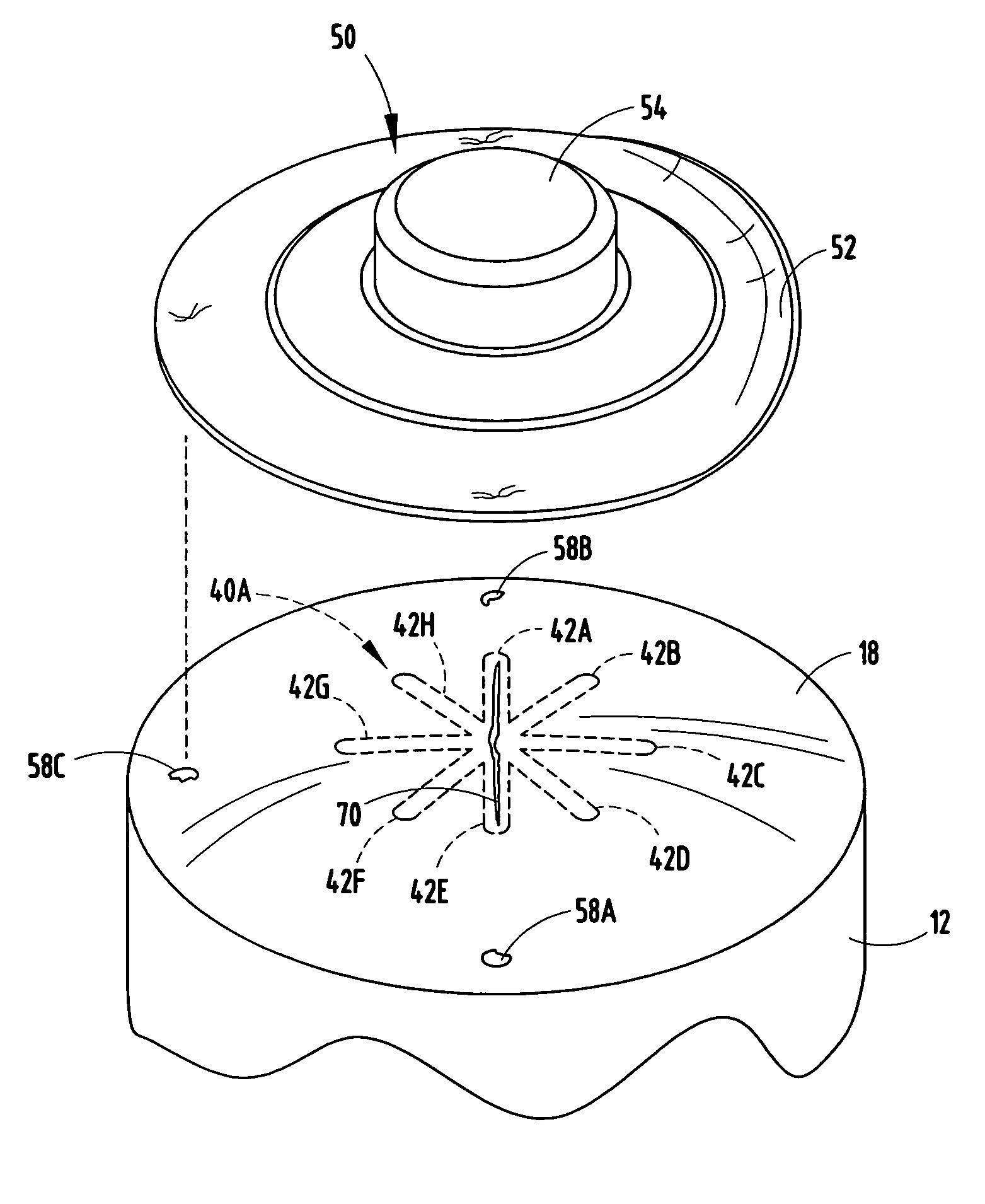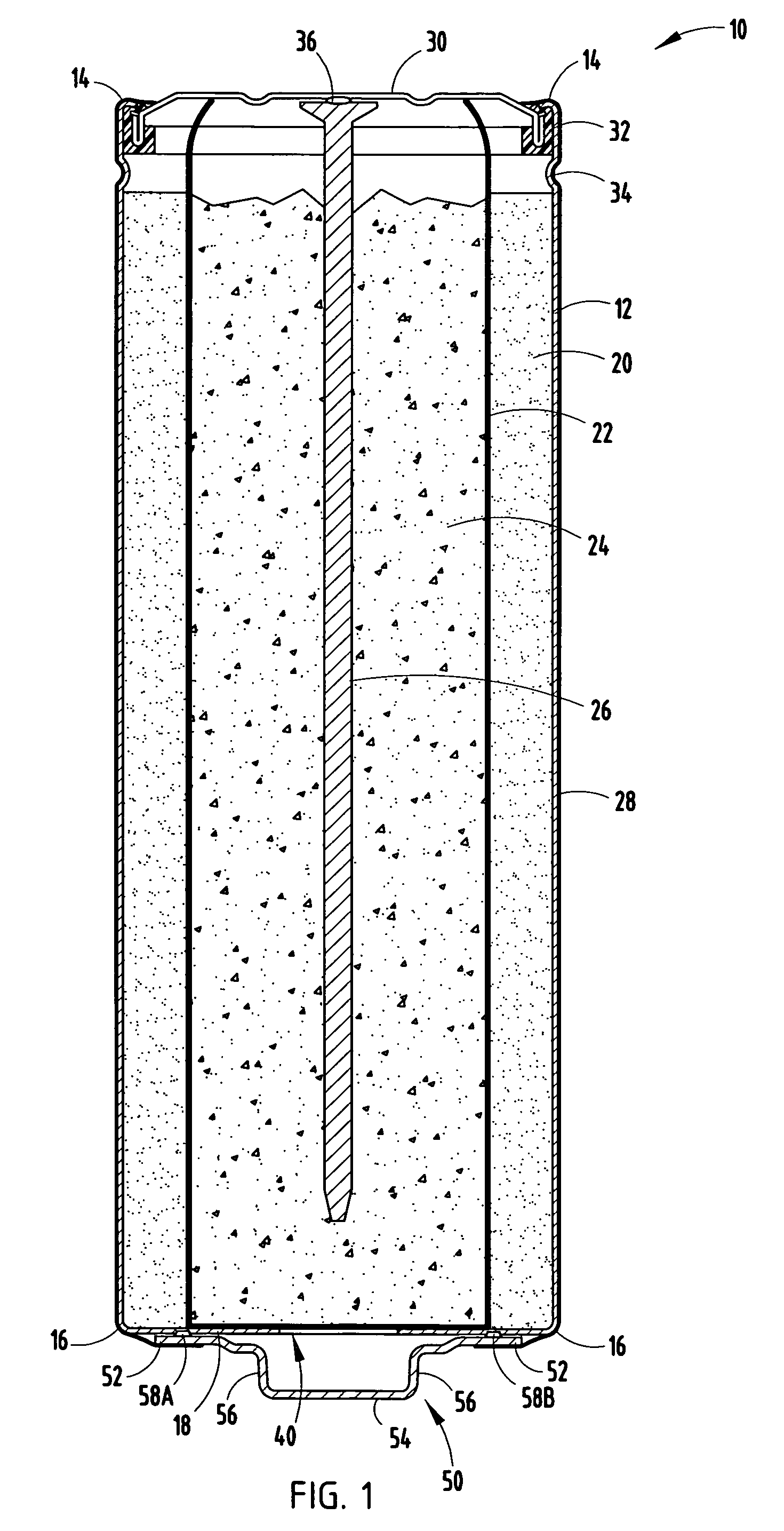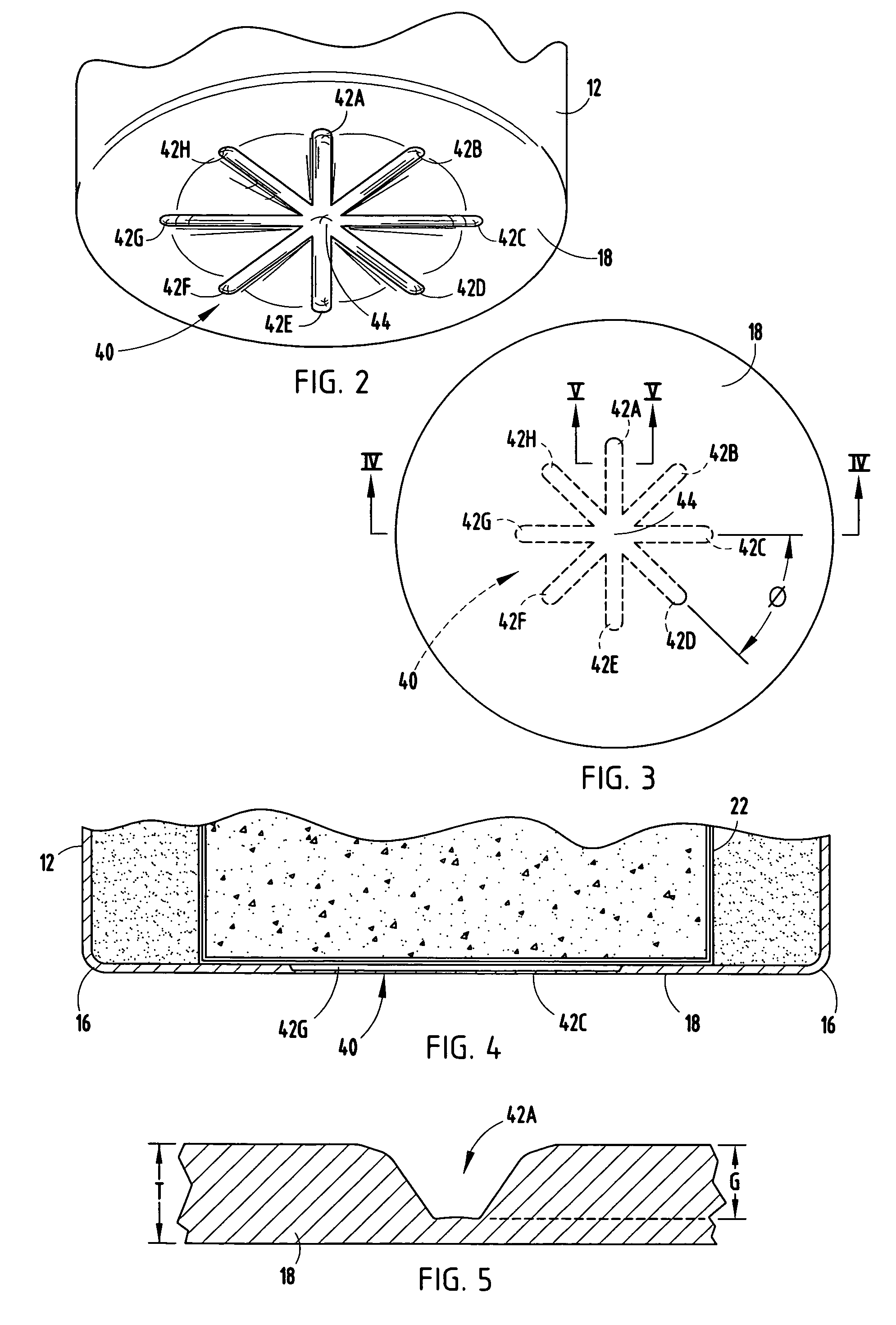Battery container having cruciform vent and cover
a technology of cruciform vents and batteries, applied in the field of electrochemical cells, can solve the problems of consuming a significant amount of useable volume within the battery, affecting the protection of the electrochemical cell, and less space available for the electrochemically active materials, etc., to achieve enhanced pressure relief, improve the protective safeguards of the electrochemical cell, and low profile
- Summary
- Abstract
- Description
- Claims
- Application Information
AI Technical Summary
Benefits of technology
Problems solved by technology
Method used
Image
Examples
Embodiment Construction
[0024]Referring to FIG. 1, a cylindrical alkaline electrochemical cell (battery) 10 is generally shown having a stress concentration pressure relief vent mechanism 40 formed in the closed bottom end wall of the cell can 12 and an overlying outer cover 50 welded to the can bottom end wall, according to one embodiment of the present invention. The pressure relief mechanism 40, formed as a reduced thickness groove, operates as a pressure rupturable vent to vent excessive gas from within the battery and, in cooperation with the outer cover 50, provides for the effective release of excessive gases. The electrochemical cell 10 may include a cylindrical alkaline cell, such as an AA-size battery cell, according to one example. It should be appreciated that other shapes and sizes of cells for use in single or multiple cell batteries may employ the vent 40 and cover 50 arrangement according to the teachings of the present invention.
[0025]The electrochemical cell 10 includes a container genera...
PUM
| Property | Measurement | Unit |
|---|---|---|
| thickness | aaaaa | aaaaa |
| angles | aaaaa | aaaaa |
| thickness | aaaaa | aaaaa |
Abstract
Description
Claims
Application Information
 Login to View More
Login to View More - R&D
- Intellectual Property
- Life Sciences
- Materials
- Tech Scout
- Unparalleled Data Quality
- Higher Quality Content
- 60% Fewer Hallucinations
Browse by: Latest US Patents, China's latest patents, Technical Efficacy Thesaurus, Application Domain, Technology Topic, Popular Technical Reports.
© 2025 PatSnap. All rights reserved.Legal|Privacy policy|Modern Slavery Act Transparency Statement|Sitemap|About US| Contact US: help@patsnap.com



